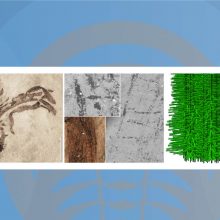
Early Mediterranean pine recruitment in burned and unburned Pinus nigra Arn. ssp. salzmannii stands of central Spain: Influence of species identity, provenances and post-dispersal predation
Sign Up to like & getrecommendations! Published in 2017 at "Forest Ecology and Management"
DOI: 10.1016/j.foreco.2017.01.026
Abstract: Abstract Forest sustainability depends on reliable tree regeneration but seedling survival is affected by climate change and disturbance. Based on seed introduction experiments, we compared recruitment of native pine species in central Spain in totally… read more here.
Keywords: seed; pine; nigra arn; pinus nigra ... See more keywords

Early colonisation of urban indoor carcasses by blow flies (Diptera: Calliphoridae): An experimental study from central Spain.
Sign Up to like & getrecommendations! Published in 2017 at "Forensic science international"
DOI: 10.1016/j.forsciint.2017.06.036
Abstract: Due to their ubiquity and synanthropy, blow flies (Diptera: Calliphoridae) are generally the first colonisers of cadavers and, therefore, frequently used to estimate a minimum post-mortem interval (minPMI). Whereas in outdoor situations blow flies are… read more here.
Keywords: blow flies; early colonisation; central spain; flies diptera ... See more keywords

Study of a modern calcrete forming in Guadalajara, Central Spain: An analogue for ancient root calcretes
Sign Up to like & getrecommendations! Published in 2018 at "Sedimentary Geology"
DOI: 10.1016/j.sedgeo.2018.06.006
Abstract: Abstract The Pajares calcrete in Central Spain, a modern calcrete, consists of an accumulation of powder carbonate around the roots of living trees and bushes which penetrates Miocene deposits by more than 3 m. Calcrete development… read more here.
Keywords: accumulation; modern calcrete; calcrete; central spain ... See more keywords

First record of a nonpaleotropical intejocerid cephalopod from Darriwilian (Middle Ordovician) strata of central Spain
Sign Up to like & getrecommendations! Published in 2019 at "Journal of Paleontology"
DOI: 10.1017/jpa.2019.66
Abstract: Abstract. The order Intejocerida is an enigmatic, short-lived cephalopod taxon known previously only from Early–Middle Ordovician beds of Siberia and the United States. Here we report a new genus, Cabaneroceras, and a new species, C.… read more here.
Keywords: central spain; ordovician strata; strata central; first record ... See more keywords

68. Raña de El Carrizal, Toledo Mountains (central Spain)
Sign Up to like & getrecommendations! Published in 2023 at "Grana"
DOI: 10.1080/00173134.2023.2189527
Abstract: Raña de El Carrizal mire (39° 26 ʹ55.56" N, 4° 27 ʹ 28.55" W; 790 m above sea level [a.s.l.]) is located in the ‘Sierra de Enmedio’ range, one of the ranges composing the ‘El… read more here.
Keywords: carrizal; mountains central; central spain; carrizal toledo ... See more keywords

Microbial Mg-rich Carbonates in an Extreme Alkaline Lake (Las Eras, Central Spain)
Sign Up to like & getrecommendations! Published in 2019 at "Frontiers in Microbiology"
DOI: 10.3389/fmicb.2019.00148
Abstract: This paper provides strong evidence for the contribution of the phylum Firmicutes in mediating the primary precipitation of Mg-rich carbonates (hydromagnesite, dolomite, magnesite, and nesquehonite) in recent microbialites from a highly alkaline and ephemeral inland… read more here.
Keywords: rich carbonates; eras central; las eras; central spain ... See more keywords

Height, Nutritional and Economic Inequality in Central Spain, 1837–1936
Sign Up to like & getrecommendations! Published in 2022 at "International Journal of Environmental Research and Public Health"
DOI: 10.3390/ijerph19063397
Abstract: This article analyzes the evolution of inequality in mean male height in central Spain considering the generations born from 1837 to 1915, measured in the drafts from 1858 to 1936 (n = 53,503). Mean adult… read more here.
Keywords: height nutritional; central spain; economic inequality; inequality ... See more keywords

Soil moisture dynamics under two rainfall frequency treatments drive early spring CO2 gas exchange of lichen-dominated biocrusts in central Spain
Sign Up to like & getrecommendations! Published in 2018 at "PeerJ"
DOI: 10.7717/peerj.5904
Abstract: Background Biocrusts, communities dominated by mosses, lichens, cyanobacteria, and other microorganisms, largely affect the carbon cycle of drylands. As poikilohydric organisms, their activity time is often limited to short hydration events. The photosynthetic and respiratory… read more here.
Keywords: moisture; carbon; frequency; central spain ... See more keywords